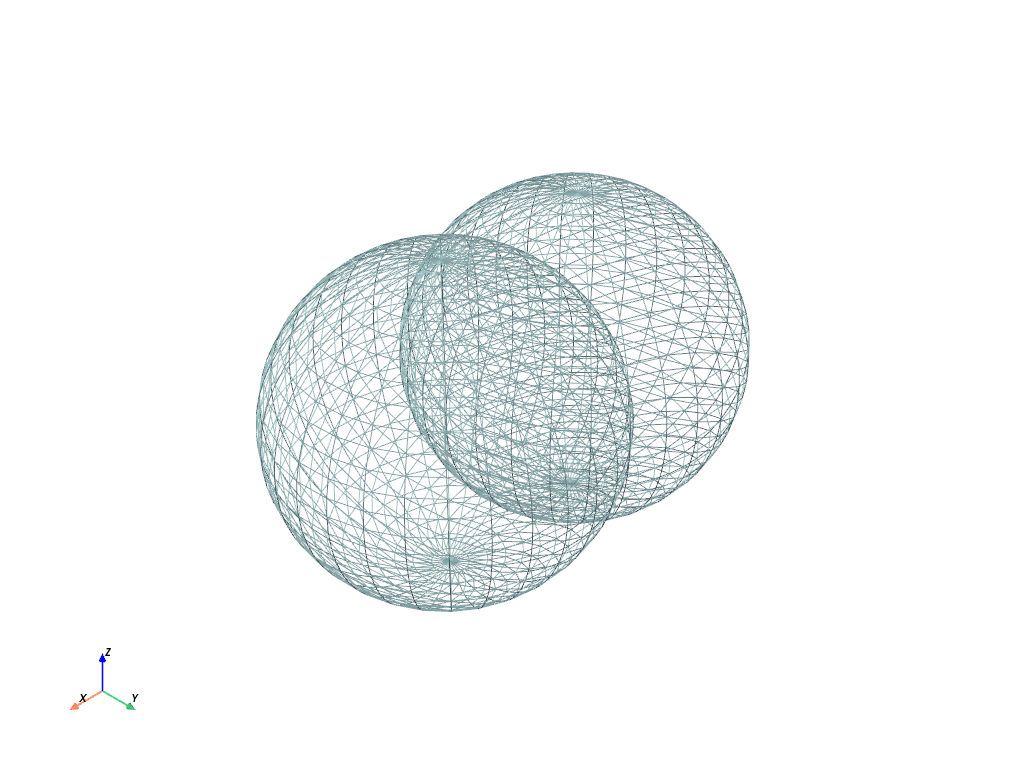pyvista.PolyDataFilters.merge#
- PolyDataFilters.merge(
- dataset,
- merge_points: bool = True,
- tolerance=0.0,
- inplace: bool = False,
- main_has_priority: bool | None = None,
- progress_bar: bool = False,
Merge this mesh with one or more datasets.
Note
The behavior of this filter varies from the
PolyDataFilters.boolean_union()filter. This filter does not attempt to create a manifold mesh and will include internal surfaces when two meshes overlap.Note
The
+operator between two meshes uses this filter with the default parameters. When the other mesh is also apyvista.PolyData, in-place merging via+=is similarly possible.Changed in version 0.39.0: Before version
0.39.0, if all input datasets were of typepyvista.PolyData, the VTK vtkAppendPolyData and vtkCleanPolyData filters were used to perform merging. Otherwise,DataSetFilters.merge(), which uses the VTK vtkAppendFilter filter, was called. To enhance performance and coherence with merging operations available for other datasets in pyvista, the merging operation has been delegated in0.39.0toDataSetFilters.merge()only, irrespectively of input datasets types. This induced that points ordering can be altered compared to previous pyvista versions when merging only PolyData together. To obtain similar results as before0.39.0for multiple PolyData, combinePolyDataFilters.append_polydata()andPolyDataFilters.clean().Warning
The merge order of this filter depends on the installed version of VTK. For example, if merging meshes
a,b, andc, the merged order isbcafor VTK<9.5 andabcfor VTK>=9.5. This may be a breaking change for some applications. If only merging two meshes, it may be possible to maintain some backwards compatibility by swapping the input order of the two meshes, though this may also affect the merged arrays and is therefore not fully backwards-compatible.See also
- Parameters:
- dataset
pyvista.DataSet PyVista dataset to merge this mesh with.
- merge_pointsbool,
optional Merge equivalent points when
True.- tolerance
float, default: 0.0 The absolute tolerance to use to find coincident points when
merge_points=True.- inplacebool, default:
False Updates grid inplace when
Trueif the input type is apyvista.PolyData. For other input meshes the result is apyvista.UnstructuredGridwhich makes in-place operation impossible.- main_has_prioritybool,
optional When this parameter is
Trueandmerge_points=True, the arrays of the merging grids will be overwritten by the original main mesh.Deprecated since version 0.46: This keyword will be removed in a future version. The main mesh always has priority with VTK 9.5.0 or later.
- progress_barbool, default:
False Display a progress bar to indicate progress.
- dataset
- Returns:
pyvista.DataSetpyvista.PolyDataifdatasetis apyvista.PolyData, otherwise apyvista.UnstructuredGrid.
Examples
>>> import pyvista as pv >>> sphere_a = pv.Sphere() >>> sphere_b = pv.Sphere(center=(0.5, 0, 0)) >>> merged = sphere_a.merge(sphere_b) >>> merged.plot(style='wireframe', color='lightblue')
